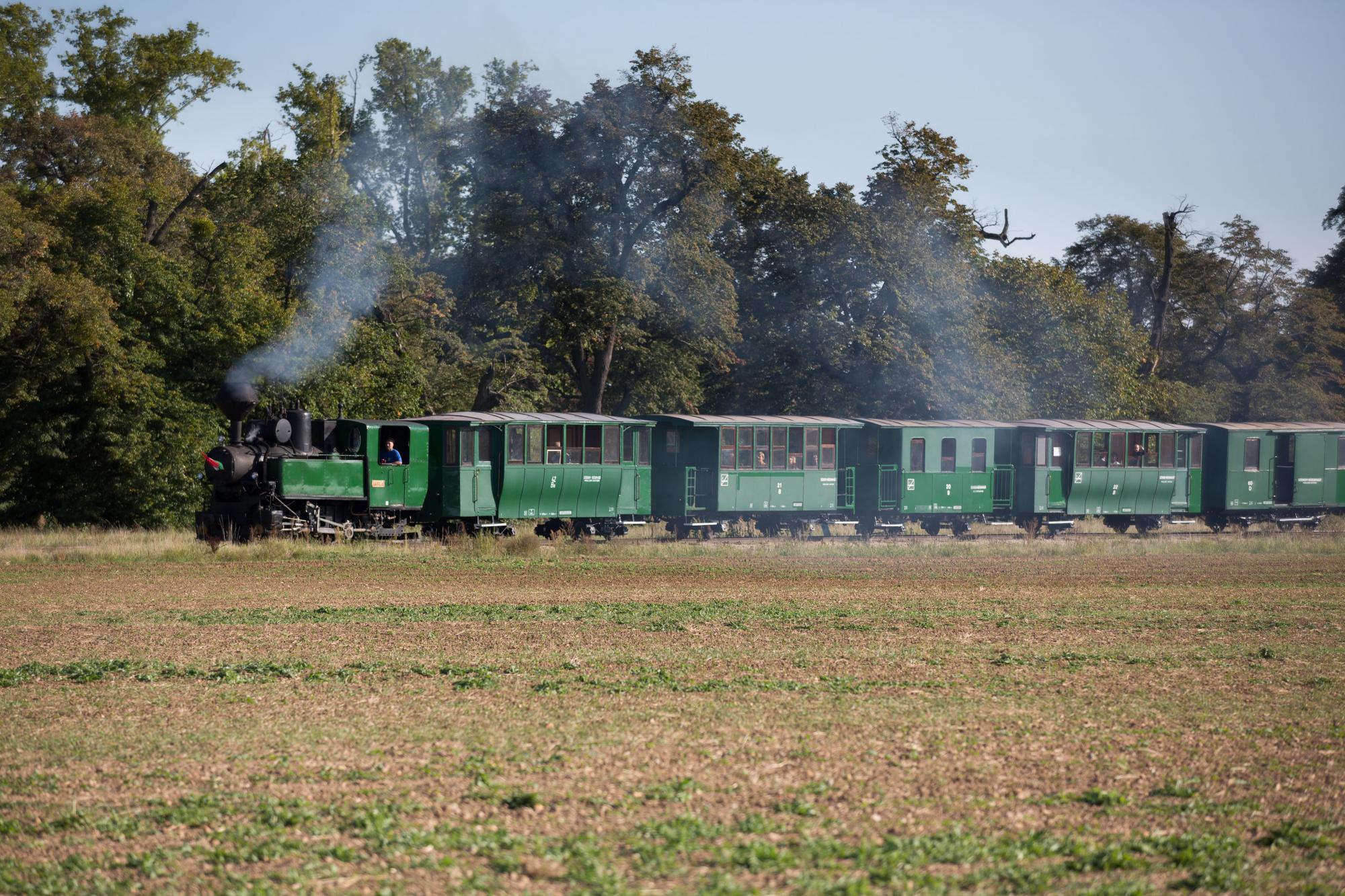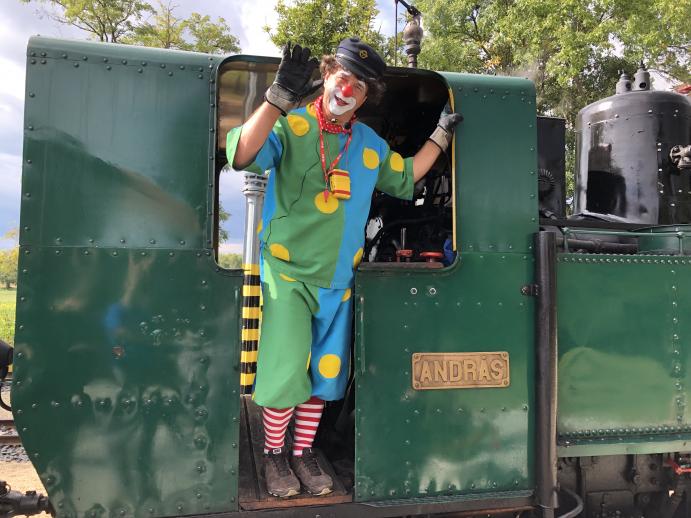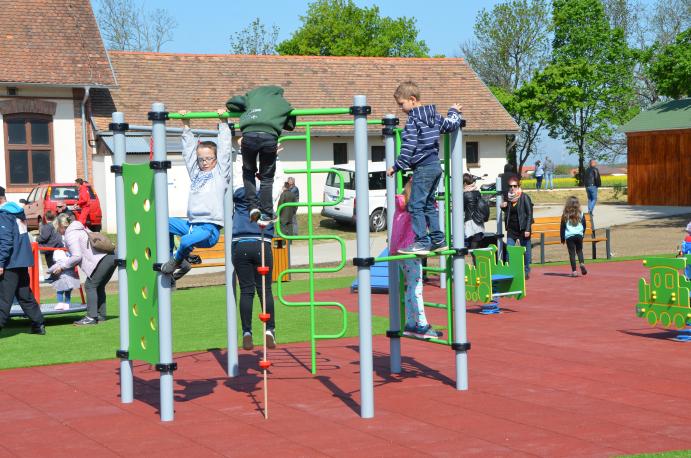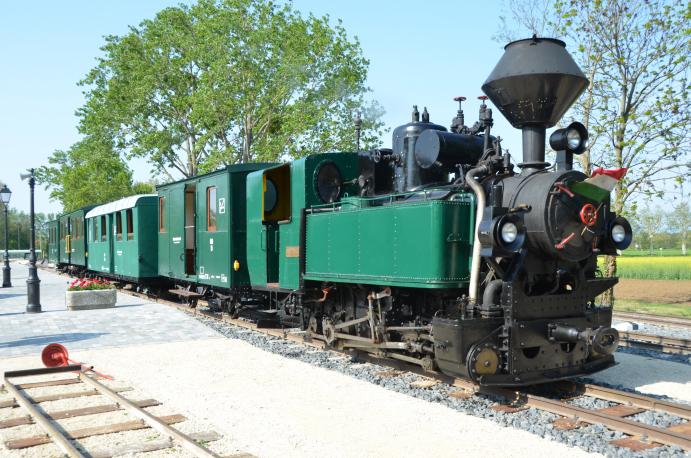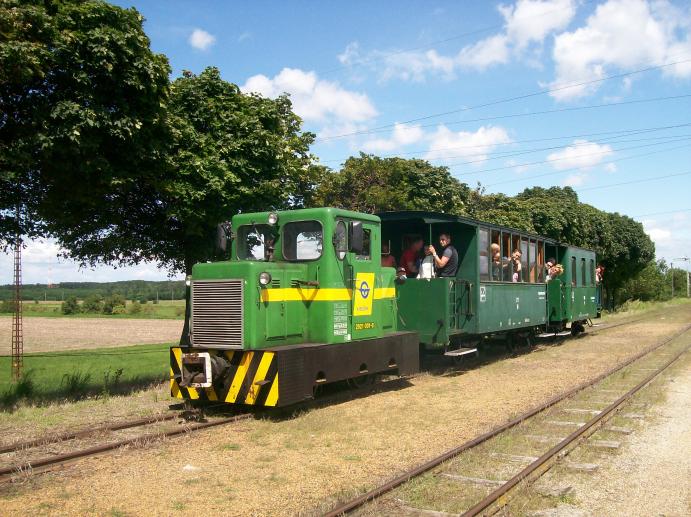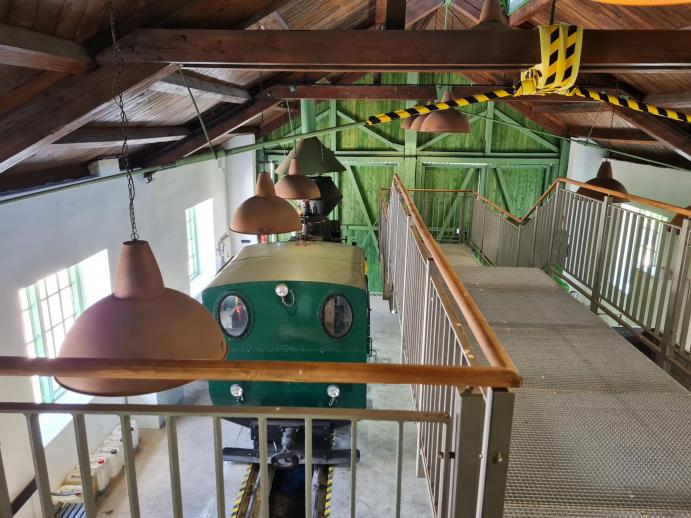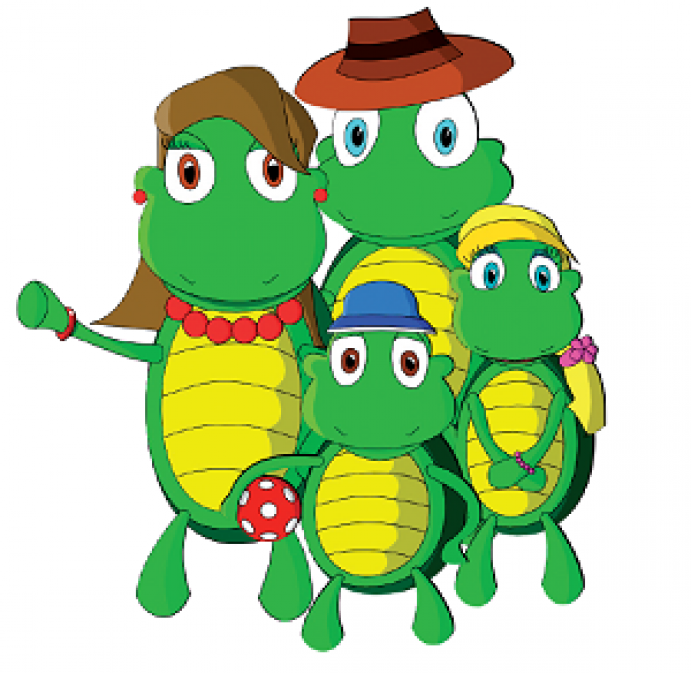Interactive trail
The interactive trail welcomes you to an exciting adventure in the world of railways.
The information boards of the railway trail await you in beautiful surroundings to explore the ancient tradition of the railway. Learn more about who cater for a pleasant trip, what special sounds you hear while on the way or what vehicles bring you to your destination.
Info boards of the trail
- Interactive board with sound – it guides you along the railway line and provides acoustic information about the museum railway and its surroundings in 3 languages
- Labyrinth – Drive the vehicles to their places
- Turn the right person over and guess who’s in the picture
- Pull up the coverings and you’ll see what happens at the station
- Get to know the sounds of the railway
- Find the pairs –Everyday life at the Széchenyi Museum Railway Nagycenk
- Get to know the trains of GYSEV
- Photo wall – Create your own vintage photo
- Railway professions – Who do you meet at the railway?
- Who travels where? – Lead the travelers to their destination
- Get to know the history of the Széchenyi Museum Railway of Nagycenk
At each board of the trail, you can collect one letter. Ask for a collection sheet at the ticket office during transport days, write the letters on it and show the word to the cashier to get a small surprise.
Play and fitness park
Classic wooden play equipment, a swing and a treadwheel conjure up old times when steamers were still running on the rails, while the modern playground equipment guarantee the children excellent fun. Meanwhile, the fitness park offers grown-ups complete relaxation.
Locomotives
The museum railway currently has two locomotives and eight passenger cars that run from spring to autumn. In the following, you can read a short description of the vehicles of the museum railway.
„Andrew”, the steam loco (Class 490)
After the First World War, narrow-gauge freight locomotives, which primarily ran on mountain tracks, were mainly used on mining railways. The locomotives of the class 492 were classified by MÁV State Railways into class XXIe, then moved to class 490 in 1911. “Andrew”, the steam locomotive was constructed at the beginning of the 20th century and was transferred to the Museum Railway of Nagycenk in the autumn of 1972, after the liquidation of the Balinka mine railway. The only remaining locomotive of this type is therefore currently in use on the Széchenyi Museum Railway.
Technical specifications
Manufacturer: MÁV Gépgyár, MÁVAG
Year of manufacture:1908–1926
Length over buffers: 6 994 mm
Mass: 17,6 t
Max. speed: 20 km/h
„Kiscenk", the diesel engine (Type C–50)
The C-50 is a locomotive series manufactured in a large number and specially built for the traction requirements of domestic commercial railways. Since production began in the early 1950s, more than 200 pieces have been made from this type of engine and the model has undergone different alterations and engine changes. Today, there are about 70 pieces of them, most of them are used by the local forestry railways. In 2004, GYSEV received a C-50 diesel locomotive from the Balatonfenyves Commercial Railway, named it “Kiscenk” and put it to use at the Museum Railway.
Technical specifications
Manufacturer: MÁV Északi Járműjavító
Year of manufacture:1952–1968
Length over buffers: 4 600 mm
Mass: 7 t
Max. speed: 30 km/h
Dmot 953 railcar
There was demand for the Dmot railcar already in 1935, but production did not start until 1940. The vehicle could even run at 58 km/h. After becoming superfluous in Kecskemét, it was taken out of service in 1971 and donated to the Museum Railway of Nagycenk, still in working order. Unfortunately, it could not be accommodated in the engine shed of Fertőboz and was therefore finally withdrawn from traffic after it was unable to withstand the different weather extremes.
In 2019-20, the railcar was renovated with state aid: it was repainted and received a new engine. Having received the operating licence recently, it is now waiting for the 2021 start of season.
Technical specifications
Manufacturer: GANZ
Year of manufacture: 1935-40
Length over buffers: n.a.
Mass: 10,8 t
Max. speed: 58 km/h
Passenger cars
In order to be able to start operations at the Museum Railway, GYSEV procured scrapped passenger cars from an already closed narrow-gauge railway in Kisújszállás. This is how the first three passenger cars arrived, which had been restored by a workshop in Debrecen. The cars were also given a new numbering. In the autumn of the same year, more cars were taken over from MÁV State Railways. In the course of the preparations for the closure of the narrow-gauge railway, a conductor’s car and four passenger cars were selected from the already discarded cars parked in Békéscsaba. These cars were also renovated as far as possible and started operating on the Museum Railway in the summer of 1971.
Other vehicles
As many cars as there are types – every passenger car and wagon of the Museum Railway is different. Each of them was carefully picked to represent a special type. At the termini of the railway line, at Fertőboz and Kastély stations, visitors encounter not only passenger cars but also some red freight wagons. If you have enough time and a keen interest in narrow-gauge railways, you should definitely take a walk by them. The wagons with the company logo of MÁV Hungarian State Railways were taken over from the narrow-gauge railway of Cegléd. In addition to these wagons, you will also see a three-axle open freight wagon at Kastély station, which has an unusual shape and bears the company logo of the Austrian State Railways ÖBB. When the narrow-gauge railway St. Pölten – Mariazell was taken out of service, this wagon was bought by Austrian railway enthusiasts and given to the Nagycenk Museum Railway as a token of friendship.
In Fertőboz, there are also two grey open wagons in between the red wagons, these come from the mine railway of Szurdokpüspöki together with the first two locomotives of the museum railway. The wagons were actively involved in the construction work of the Museum Railway and are used today for ad hoc material transportation.
Line network, buildings
The first part of the track was built in place of the onetime sugar works siding, between ‘Fertőboz’ and ‘Barátság’ stations. The most beautiful section of this line section is the three-span bridge over the Ikva Stream. Two buildings were built along the line: the one at the stop ‘Nádtelep’ and the small station building of ‘Barátság’, designed after the buildings of the railway stop and loading place of Szurdokpüspöki.
Branching off at ‘Nádtelep’, the 2400m long second line section winds up to ‘Kastély’ stop in Nagycenk. The 14 kg/m rail material of the track comes from closed commercial railways, the sleepers are partly concrete and partly wooden sleepers. The currently permitted axle load on the track is 12tons. The engine shed, which can accommodate four locomotives at the same time, was built according to MÁV standards in Fertőboz, next to the railway station of the main line.
Interlocking system
For the protection of “Kastély” stop, a Banovits signal system - an electronic disc signal from the end of the last century - was installed. Previously, the system had been stored in the Transport Museum of Budapest. For the protection of the branching point, a three-armed signal was put to use. From the direction of “Barátság” stop, the branching point is protected with an interesting double-armed cover signal. We received this signal from the Transport Museum in a dilapidated state. After renovation by GYSEV’s locksmiths, it is usable again, while its historical value has also been kept. From the direction of Fertőboz, there is a form signal according to MÁV standard in front of the branching point. From the direction of “Kastély” station, there is a Roessemann-Kühnemann signal with a lattice mast construction. It dates back to the last century and was the cover signal for the sugar factory of Siegendorf for decades. Such an “old” signal was installed in front of “Barátság” station, too. The route of the museum railway crosses the former country road that led to Sopron, so that a station keeper's house was built at the crossing point. If a train runs here, the road is closed to rail traffic with barriers.
Open-air museum
Visitors to the museum railway can not only try out the narrow-gauge railway, because “Kastély” station offers numerous entertainment options. The open-air museum tells about the history of the narrow-gauge railways with the help of several locomotives and passenger cars on display. All vehicles were previously in use on various narrow-gauge railways in Hungary. The vehicles on display are no longer operational, but they have been restored for posterity. In 2020, a turntable for narrow-gauge railways – a property of the Transport Museum – was added to the existing vehicles.
Children’s corner
Cenki Teki is GYSEV’s mascot. The big-eyed, green-yellow turtles of the family “Teki” liven up the everyday work at the railway. You can meet them at many events and at many railway stations, where they enjoy entertaining visitors and are always ready for a common photo.
You can easily take Cenki Teki home with you, as there are already T-shirts, stationery and different toys with the picture of Teki, Tekla and their children Flóra and Flórián, but you can also have them with you at all times on a keychain.
Do you like Cenki Teki? Then click here and download your own turtle colouring book!
Family Cenki: Teki, Tekla, Flóra and Flórián
